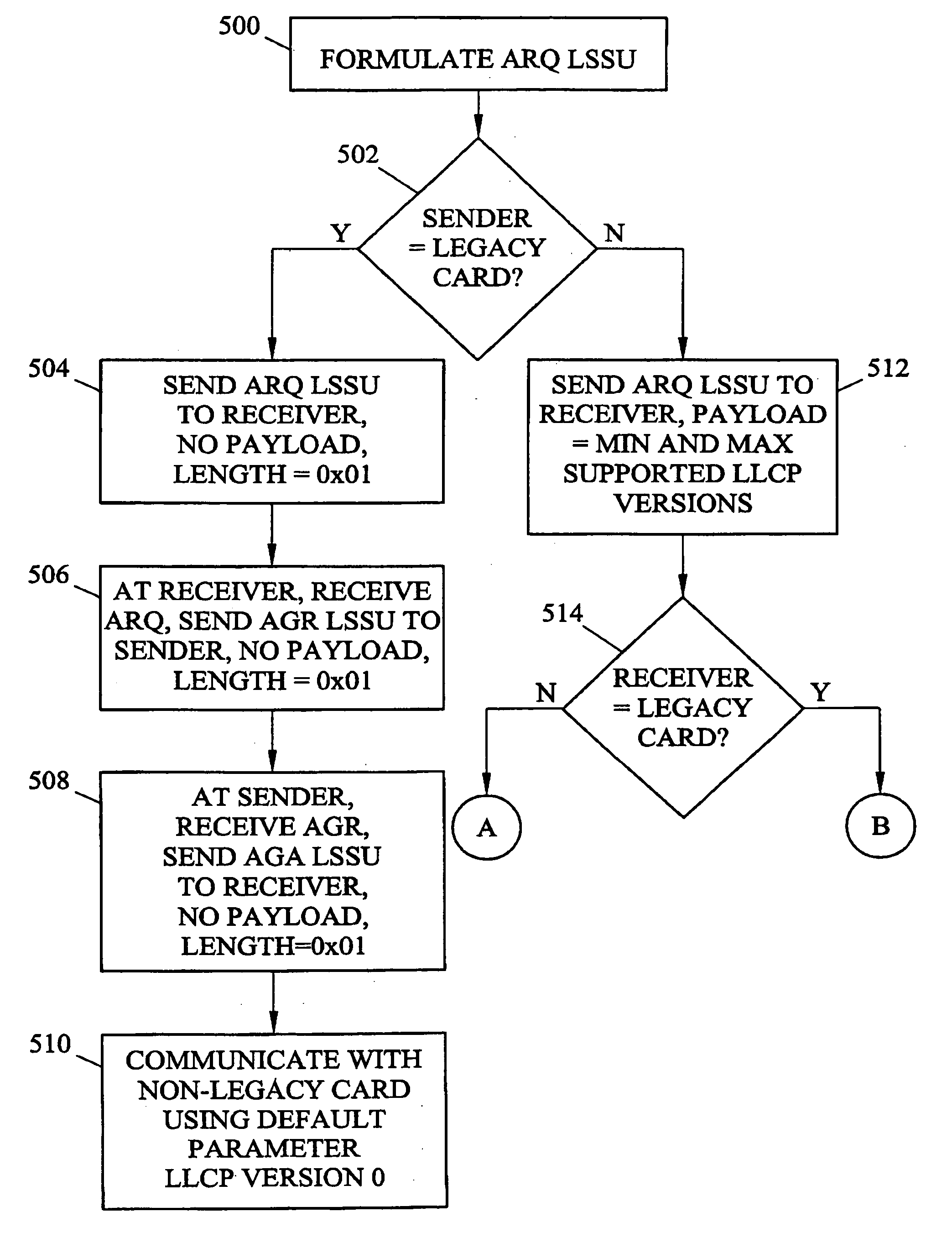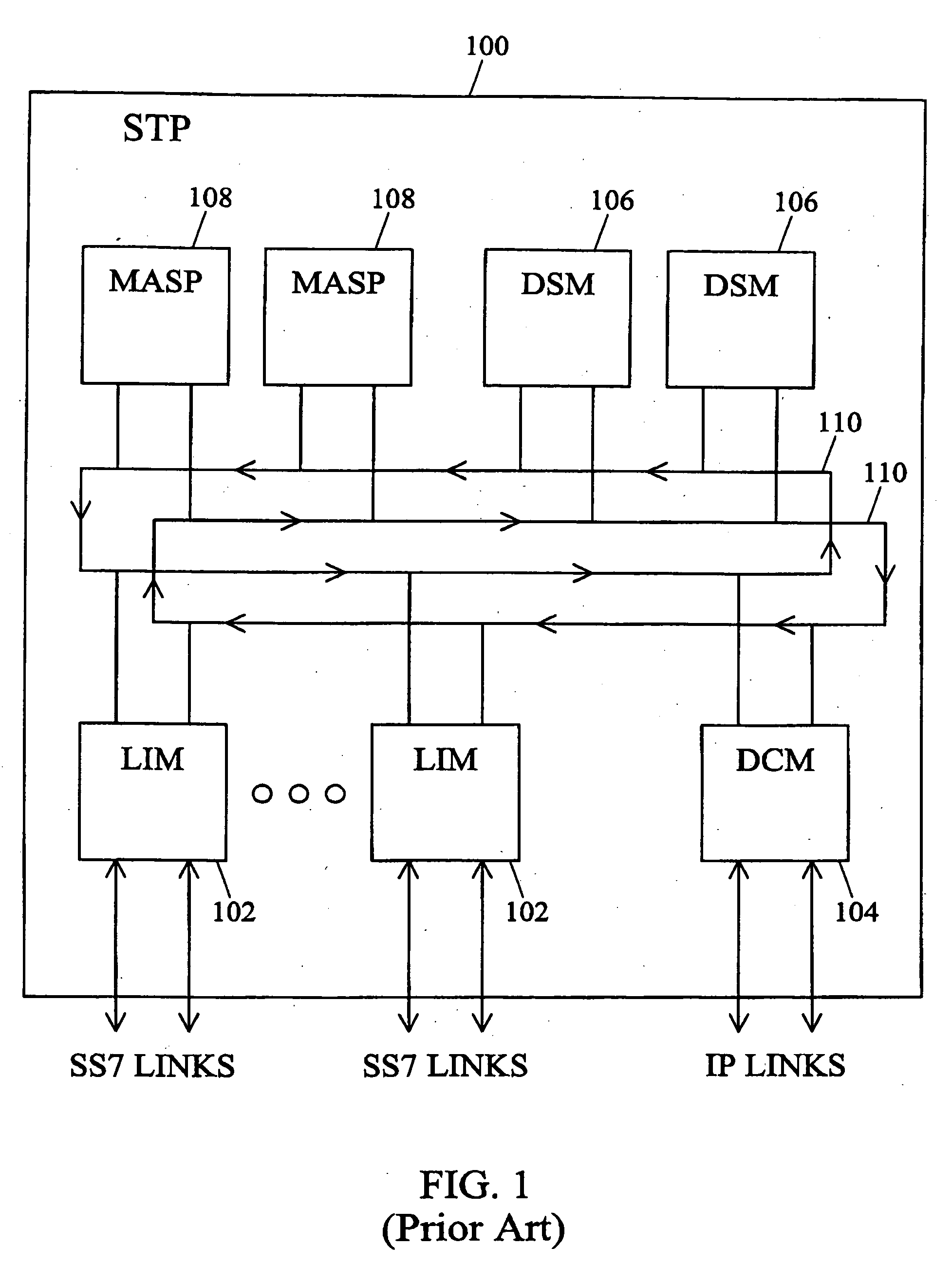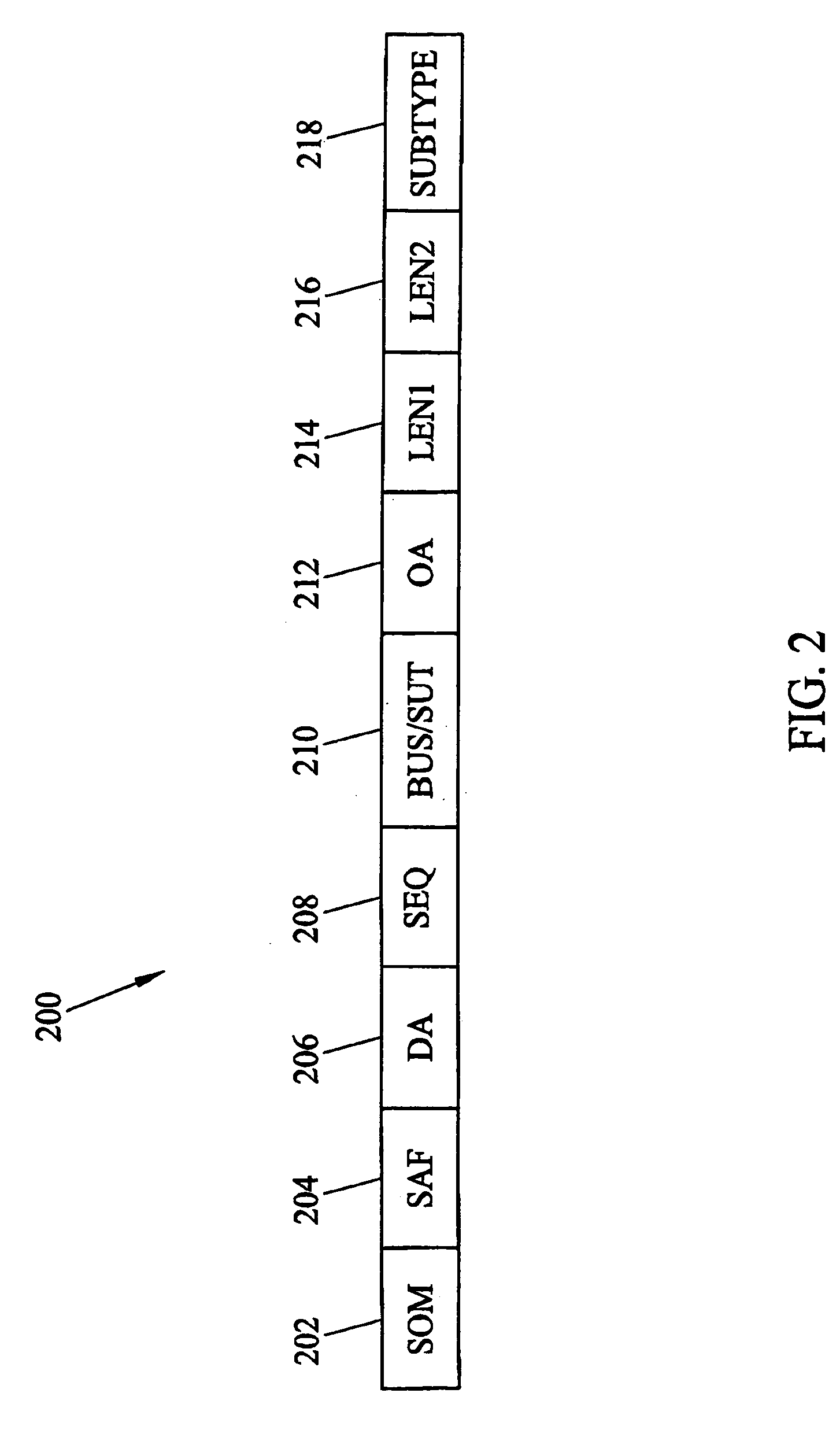Methods and systems for extensible link level alignment between modules in a distributed processing system
a distributed processing system and module technology, applied in frequency-division multiplex, data switching networks, instruments, etc., can solve the problems of limited imt bus, set of parameters or algorithms used by each card in the system, and limited new card availability
- Summary
- Abstract
- Description
- Claims
- Application Information
AI Technical Summary
Benefits of technology
Problems solved by technology
Method used
Image
Examples
Embodiment Construction
[0034] The methods and systems for link level card alignment according to the present invention may be implemented on any suitable hardware platform with a distributed processing architecture in which processing modules establish link level connections with other processing modules. FIG. 4 is a block diagram illustrating an exemplary signal transfer point with a distributed processing architecture on which embodiments of the present invention may be implemented. Referring to FIG. 4, signal transfer point 400 includes link interface modules 402 and 404, data communications module 406, database services modules 408, and maintenance administration subsystem processors 410. Modules 402,404,406,408, and 410 are connected via IMT bus 412. In the illustrated example, each module includes a communications processor 414 for communicating with other processing modules via IMT bus 412.
[0035] According to the present invention, at least some of the modules in STP 400 include a link level commu...
PUM
 Login to View More
Login to View More Abstract
Description
Claims
Application Information
 Login to View More
Login to View More - R&D
- Intellectual Property
- Life Sciences
- Materials
- Tech Scout
- Unparalleled Data Quality
- Higher Quality Content
- 60% Fewer Hallucinations
Browse by: Latest US Patents, China's latest patents, Technical Efficacy Thesaurus, Application Domain, Technology Topic, Popular Technical Reports.
© 2025 PatSnap. All rights reserved.Legal|Privacy policy|Modern Slavery Act Transparency Statement|Sitemap|About US| Contact US: help@patsnap.com



